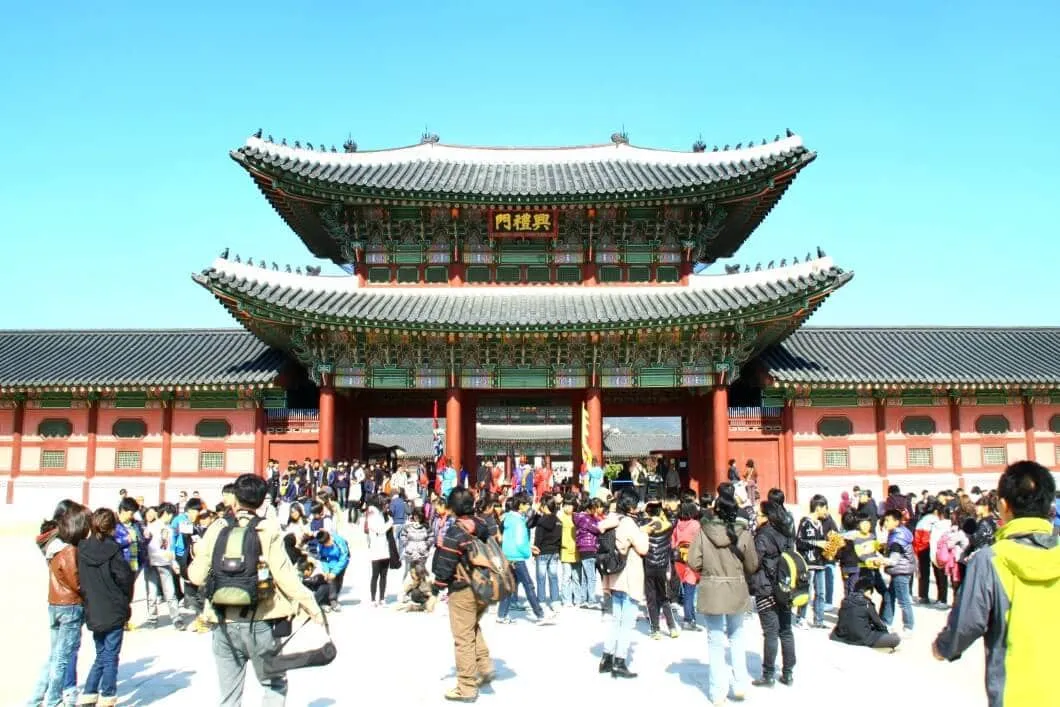
At the beginning of this year, the number of Korean tourists visiting China has been increasing, leading to a substantial rise in the demand for tourism in China. Chinese tourists however have been visiting South Korea in greater numbers as well.
According to several Korean travel agencies, the number of Korean group tourists to China has notably increased in the first half of this year. Data released by China's Ministry of Culture and Tourism shows that in the first quarter of this year, Korean tourists ranked second and third, respectively, in terms of inbound tourists, showcasing the popularity of China as a travel destination for Koreans.
Additionally, the number of Chinese tourists visiting South Korea exceeded one million in the first quarter of this year, making China the largest source of foreign tourists for South Korea. This two-way trend of tourism exchange between China and South Korea is leading to increasingly active people-to-people exchanges.
With the rise in the number of people from Korea traveling to China, Korean airlines are increasing the number of available routes. Korean Air currently offers three direct flights to Zhangjiajie each week, and in June alone, the route transported a total of 3,238 passengers, with a passenger load factor of 75%. Responding to the growing demand for travel to China, the frequency of flights on the Zhangjiajie route will increase from three to five times a week during the peak tourist season from September to October.
Chinese Tourists to Have Rebounded Strongly
On August 10, 2023, China's Ministry of Culture and Tourism announced the resumption of outbound group tours for Chinese citizens to relevant countries and regions (Third Batch), including restarting the group tour business for Chinese citizens to Korea. Subsequently, the Ministry of Culture, Sports and Tourism of Korea released a plan to attract Chinese tourists, aiming to attract 2 million annually.
Starting from the second half of 2023, the number of Chinese tourists visiting South Korea has gradually increased, indicating a strong recovery in tourism to South Korea. This trend has been even more pronounced since 2024, demonstrating the tourism industry's resilience and potential for growth. According to the latest data from the Korean Tourism Organization, from January to May this year, 1.82 million Chinese tourists visited Korea, making China the largest source of foreign tourists. This represents a significant increase of 381.5% compared to last year.
Lotte World, Korea's largest indoor theme park, has reported a significant increase in overseas tourists visiting the park. In the first half of 2024, 15% of park visitors are projected to be from overseas, marking a 5% increase from the previous year. Notably, there has been a substantial increase in Chinese tourists, with a more than tenfold year-on-year increase.

Chinese Tourists' Travel Preferences Have Changed
After the pandemic, there have been significant changes in Chinese tourists' travel preferences and consumption trends. A report from the Korea Tourism Administration revealed that Chinese travel to South Korea is mainly focused on beauty salons, medical treatments, dermatology, and clothing and fashion. These trends indicate a strong demand from Chinese tourists for high-quality services and personalized travel experiences.
Besides traditional shopping and beauty treatments, Chinese tourists are also keenly interested in Korea's culture and personalized travel experiences. They enjoy visiting the filming locations of Korean dramas and taking part in traditional Korean cultural experiences, which provide them with a meaningful travel experience and reflect the growing influence of Korean culture. Moreover, personalized tourism services are gaining popularity as they cater to the diverse needs of different tourists. Travel agencies and platforms now offer customized services to meet these varied demands.
The '144-hour transit visa-free' policy in China is expected to attract more tourists from Korea. July 20 marks the birthday of the giant panda 'Fu Bao'. A Korean fan of 'Fu Bao' revealed plans to benefit from the transit visa exemption to meet 'Fu Bao' by devising a travel strategy to arrive in Chengdu on the same day to celebrate. This growing trend of tourism exchanges between China and South Korea indicates a mutual development in tourism and promises a bright future for the tourism market in both countries. With further facilitation measures, the tourism market in China and South Korea is expected to flourish even more.









